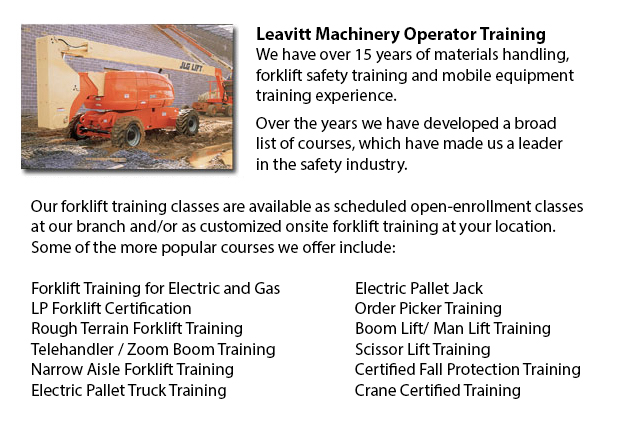
Aerial Platform Training Regina - Aerial forklifts can accommodate various tasks involving high and tough reaching spaces. Sometimes used to complete daily maintenance in buildings with high ceilings, trim tree branches, hoist burdensome shelving units or mend telephone cables. A ladder could also be utilized for many of the aforementioned jobs, although aerial hoists provide more safety and stability when correctly used.
There are several designs of aerial platform lifts existing on the market depending on what the task required involves. Painters sometimes use scissor aerial lifts for instance, which are classified as mobile scaffolding, effective in painting trim and reaching the 2nd story and above on buildings. The scissor aerial platform lifts use criss-cross braces to stretch out and lengthen upwards. There is a table attached to the top of the braces that rises simultaneously as the criss-cross braces raise.
Cherry pickers and bucket trucks are a further version of the aerial hoist. Normally, they contain a bucket at the end of a long arm and as the arm unfolds, the attached bucket platform rises. Forklifts use a pronged arm that rises upwards as the handle is moved. Boom lift trucks have a hydraulic arm that extends outward and hoists the platform. Every one of these aerial hoists require special training to operate.
Through the Occupational Safety & Health Association, also called OSHA, instruction programs are offered to help make certain the workforce meet occupational standards for safety, system operation, inspection and maintenance and machine cargo capacities. Employees receive qualifications upon completion of the classes and only OSHA certified employees should run aerial lifts. The Occupational Safety & Health Organization has formed guidelines to maintain safety and prevent injury while utilizing aerial lifts. Common sense rules such as not utilizing this machine to give rides and making sure all tires on aerial hoists are braced so as to hinder machine tipping are mentioned within the rules.
Sadly, figures reveal that greater than 20 aerial lift operators die each year when operating and almost ten percent of those are commercial painters. The bulk of these accidents were triggered by inadequate tie bracing, hence some of these could have been prevented. Operators should make certain that all wheels are locked and braces as a critical security precaution to stop the instrument from toppling over.
Marking the encompassing area with obvious markers have to be utilized to safeguard would-be passers-by so they do not come near the lift. Additionally, markings should be placed at about 10 feet of clearance amid any electrical lines and the aerial lift. Lift operators should at all times be appropriately harnessed to the lift while up in the air.
-
Forklift Training Classes Regina
Forklift Training Classes Regina - Forklifts are a kind of heavy lifting equipment used in order to move and handle material efficiently and safely. Sometimes called Lift Trucks, they are made use of in different industries. Employees working with an... More -
Crane Certification Regina
Crane Certification Regina - The Crane Certification Program covers the industry suggested content which would teach the safe and efficient operation of cranes. The person will train in the following: pre-operational, operational and post operating r... More -
Telehandler Training Courses Regina
Telehandler Training Courses Regina - Employers are responsible for making sure that their operating personnel and supervisors are trained to work proficiently utilizing telehandler machines. The competence level of employees need to be assessed. If... More -
Operator Safety Training, Re-Qualification Training, In-House Instructor Training in Regina
Lift trucks are utilized in just about all industrial construction sites and in warehouse operations and in boat yards. The reach feature of a lift truck is a very important component utilized in a variety of applications like for instance when a she... More -
Heavy Equipment Operator Training Regina
Heavy Equipment Operator Training Regina - Training facilities that offer good standards in the business and not only provide field performing tasks but additional equipment training are highly sought after. Accredited schools offer students the know... More -
Wheel Loader Operator Training Regina
Wheel Loader Operator Training Regina - Cranes are industrial machines which make use of pulleys or levers so as to lift considerable loads. The Roman people utilized cranes in order to put up big monuments, that means these machines have been existi... More -
Crane Safety Training Regina
Crane Safety Training Regina - Both crane driver as well as their supervisors need to know all the possible problems connected to the operation of an overhead crane. All over North America, there is legislation that provides regulation for the safe o... More -
Scissor Lift Safety Training Regina
Scissor Lift Safety Training Regina - A Scissor Lift is a functional kind of platform that normally moves in a vertical direction. The machinery is capable of this movement due to the use of folding supports that are linked in a criss-cross pattern c... More

Forklift Training Regina
TOLL FREE: 1-888-254-6157
Regina, Saskatchewan
forklifttrainingregina.com
Email Us
About Us



